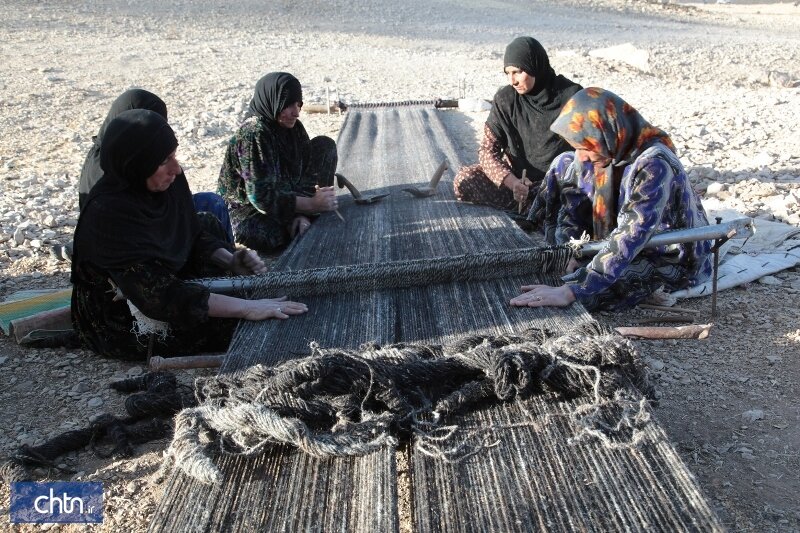Nomadic art of making Siah-Chador revived in western Iran

TEHRAN- The art of making Siah-Chador (nomadic black tents), that had been fallen into oblivion in western Ilam province, has been revived.
Making Siah-Chador is a valuable industrial art with a history close to the nomadic life, that had been forgotten, but now it has been revived and reached the production stage with the careful planning in collaboration with the private sector, CHTN quoted provincial tourism chief Abdolmalek Shanbehzadeh as saying on Wednesday.
As Masoumeh Ebtekar, vice president for women’s and family affairs, announced in April 2018, some 75 percent of Iranian handicrafts are produced by females, and making Siah-Chador is not an exception.
The field has been practiced by women among Iranian nomads for generations. The black tents are woven from the hair of black goats, which don’t let water pass through and are available, cheap, light, and easy to collect and carry.
Men are responsible for setting up the tents and nomads usually live and rest under these black tents in summers and winters.
Reviving this field of handicraft will contribute to the prosperity of the nomadic economy, as well as generate job opportunities, Shanbehzadeh added.
Back in May, the official announced that Ilam has exported more than $50 million of handicrafts to neighboring Iraq through the Mehran border since the last Iranian year 1398 (started March 21, 2019).
Embossed kilim, wooden products, traditional glassware, zilou floor coverings, ceramics, and wool felt products constituted the lion’s share of the exports, of which embossed kilim is the most sought-after.
Dozens of Iranian handicrafts have gained the UNESCO Seal of Excellence during the past couple of years.
Home to almost half of Iran’s UNESCO sites, western Iran is a land of hospitable people, wild extremes, and wilder history, and it may be an independent traveler's adventure playground. The region also witnessed the rise and fall of many great empires once bordering Mesopotamia, Ottoman Turkey, and Czarist Russia.
ABU/MG
Leave a Comment